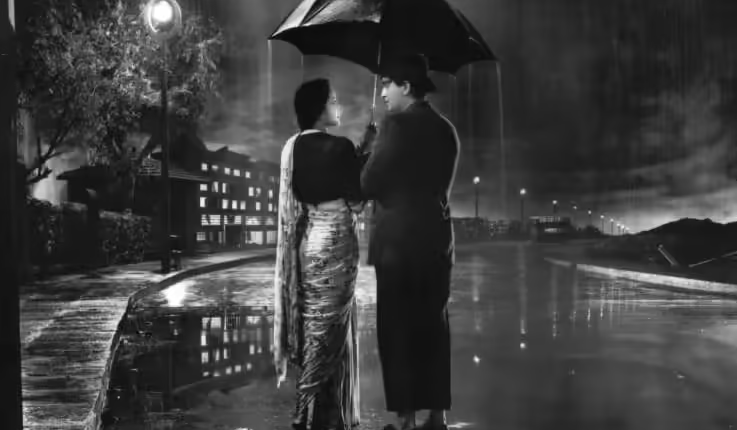The Romance of Rain: A Cultural and Climatic Tribute to the Monsoon
By Dr. Syed Ibrahim Rizvi
Professor of Biochemistry, University of Allahabad
Throughout Earth’s 4.5-billion-year history, the planet has experienced dramatic climatic shifts, including five to six significant ice ages.
Fortunately, we now find ourselves in a relatively stable and life-sustaining phase — the interglacial period of the Quaternary glaciation, which began after the Last Glacial Period ended approximately 11,700 years ago.
This warm era has proven to be a cradle for life, particularly human civilization, which has flourished under its temperate blessings.
This climatic stability has allowed human populations to expand exponentially. In 1900, the global population was around one billion.
Fast forward to 2025, and that figure has surged to nearly eight billion. Strikingly, nearly 40% of the world’s population resides in just four countries — India, China, Pakistan, and Bangladesh — a statistic that begs explanation.
The answer lies not just in demography or history but in geography and climate. These nations are cradled in a region shaped by ancient river systems, fertile plains, and a favorable subtropical climate.
But one of the most defining features of this region — a climatic marvel that shapes its culture, economy, and emotional landscape — is the monsoon.
The Indian subcontinent is uniquely blessed with well-defined seasons, a rare phenomenon globally. This is largely due to the formidable Himalayas, which act as a natural barrier to the icy Siberian winds and simultaneously influence the complex monsoon system.
These towering mountains regulate rainfall and protect the subcontinent’s delicate climate equilibrium.
Among all seasons, the monsoon holds a cherished place in the heart of the Indian people. In most cold countries, spring is eagerly awaited and autumn is mourned, often seen as a metaphor for decline, symbolizing the “autumn of life.”
But in India, the arrival of autumn coincides with major festivals like Dussehra and Diwali, turning it into a season of celebration.
Yet, nothing quite compares to the emotional and cultural significance of the rainy season. The first monsoon showers bring a visceral sense of relief from the oppressive summer heat.
They trigger the evocative scent of petrichor — the earthy aroma born from geosmin, a compound released by soil-dwelling bacteria. It is a smell that awakens memories, joy, and renewal.
For farmers, the rains are more than just relief — they are life itself. They nourish fields, recharge groundwater, and prepare the land for sowing vital crops like paddy.
For children, especially in earlier times, a morning shower could bring the unexpected delight of a school holiday. The term “rainy day” would evoke glee, not gloom.
But the romance of rain isn’t just agricultural or nostalgic — it’s also cinematic. Bollywood, ever sensitive to the mood of the masses, has long used rain as a metaphor for love, longing, and passion. Whether it’s the elegant duet of Amitabh Bachchan and Moushumi Chatterjee strolling down a rain-kissed Marine Drive to “Rimjhim Gire Saawan” or the ethereal melody of Raakhee singing “Sawan Ke Jhoole Pade Hain,” the rainy season has always been Bollywood’s favorite muse.
Music directors composed immortal melodies based on Indian classical ragas like Megh Malhar and Kafi, both deeply rooted in the spirit of the monsoon.
Filmmakers, meanwhile, found ways to explore romantic intimacy under the censor’s watchful eye by letting the rain serve as a sensual curtain. Think of the innocent yet iconic moment in Shree 420, where Raj Kapoor and Nargis walk under a single umbrella, singing “Pyaar Hua Iqraar Hua,” as monsoon droplets narrate their love story.
Later, this evolved into more daring portrayals — like Raveena Tandon’s iconic “Tip Tip Barsa Paani” — which fused sensuality with the symbolic power of the monsoon. The wet sari, the passionate dance, and the rhythmic rain all became part of India’s collective cinematic memory.
Beyond poetry and cinema, the monsoon is also a vital ecological event. It replenishes lakes, rivers, and aquifers, sustains biodiversity, and dictates the country’s agricultural output.
And, of course, it brings with it the simple joys — the crackle of fresh pakoras, the smell of roasted corn, and long afternoon naps made possible by the rhythm of rainfall.
The monsoon is not just a season — it is an emotion, a rhythm of life in the Indian subcontinent. It rejuvenates not only the earth but also the soul of its people. As it recedes, it leaves behind memories and a promise of return, of hope, and renewal.
Waiting for the next monsoon is not merely a matter of weather. It is an anticipation of beauty, bounty, and belonging, year after year.
#MonsoonMagic #IndianCulture #ClimateAndCulture #RainySeasonVibes #BollywoodRainRomance #GeographyOfLove #MonsoonDiaries #IndianSubcontinent #PetrichorLove #RainSongs #NatureAndNostalgia #RaagMeghMalhar #TipTipBarsaPaani #RajKapoorMoments #RainAndRomance #CinematicMonsoon

